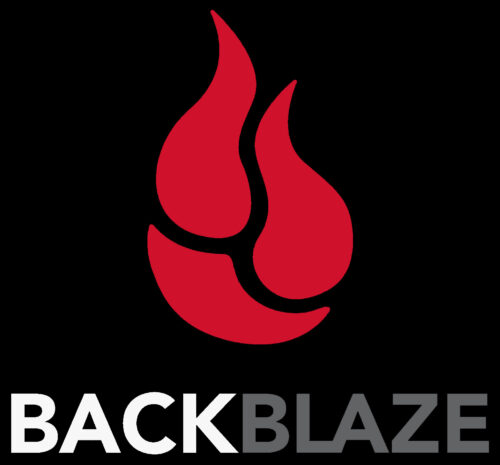Business Continuity and Disaster Recovery
You Back Up Your Data. Do You Have a Backup for Your Computer?
You need to back up your computer. Now, if you have not already.
Most folks reading this blog know that it is not a matter of if you will lose data, only a matter of when, how often, and how freaking horrible will it be.
That’s why everyone reading this has at least two data backups: at least one full on-site backup and at least one off-site (or internet) backup.
But let’s look at this from the perspective of losing as little productive time as possible. This falls under Business Continuity and Disaster Recovery.
If you are like me and can’t function without glasses, you have a second (or third) pair of glasses hanging around. Because you know without clear vision, you are down for the count. If you are a woodworker, you have more than one chisel. A cowboy has more than one horse. A race car driver has a spare of everything for his car.
So. If your job is dependent on a functional computer, what happens when the motherboard gives up the ghost? Or a drive goes bad? One day, that will happen. The average life of these with daily use is around 3 years.
Sure, you have your data backed up, but how long will it take for you to get fully functional?
- First, you must locate a compatible computer.
- Then, the replacement computer needs to have all needed applications and updates installed.
- By the time your data is copied over to the replacement machine, it may be a day or two before you are back in business.
And how much will this downtime cost you and your business? A simple web search found such a broad range of loss calculations –- from $1,000-$3,000,000/hr – isn’t useful.
But let’s do a bit of mind experiment. If employee A is sitting on hands for a day because of IT downtime, that means the widgets A was to produce for employee B to perform a value-added task weren’t going to B, so B also is sitting on hands. And of course, the work that B was to do to hand off to employee C? Well, you get the picture. There’s a whole lot of hands being sat on just because of one down system.
Now consider the cost per employee, and this starts to look like real money!
We haven’t even looked at how customer satisfaction is impacted because widgets are now in short supply, or the register lines are painfully long.
If you are a one-person shop? Your business just went from 100% productivity and sales to 0% in a nanosecond.
The Solution
Your solution is no different than my need for glasses, the woodworker’s need for multiple chisels, the cowboy’s need for a few horses, and the race car driver’s warehouse full of spare tires, windows, fireproof suits and lug nuts.
If your job is dependent on a computer, you simply must have a spare hanging around.
In my case, I have a new $3,600 rocket ship for my primary computer. But my spare is a beat-up, three-year old that runs at around 1/8th speed. But it lets me do my job in an emergency.
In other words, I can maintain business continuity. And I can recover almost immediately from a disaster because I planned for this possibility.
The Strategy
It is vital that you get back to doing your work. If you already have a spare computer, you have saved yourself at least a day of shopping and computer setup.
The next longest delay is loading your data from backup to computer. It’s so old-school to store data on a computer, I don’t do this at all.
Instead, for better productivity, continuity, and security, data should be stored on the web with a Cloud service. This solves several problems:
- Should you be away from your computer – perhaps on the other side of the planet – as long as you have a browser, you can access your web-based data using your mobile phone or another computer.
- If your computer is stolen, all they get is a computer. Your data is stored, encrypted, on a Cloud service.
- A large piece of your Disaster Recovery plan is taken care of. Should catastrophe strike (think Texas or Florida), you and your staff can get right back to business from hotel rooms in another state.
- And when your computer fails, you are back in business within 15 minutes with the following steps:
- Place the dead computer in a corner for service.
- Move the spare onto your desk.
- Power on, log in.
- Launch a browser.
- Enter your password.
- All your data is there!
The Specifics
Business continuity starts with acquiring a backup computer. As this is just an insurance policy to get you through until your primary computer is repaired or replaced, the backup doesn’t need the same high-end specifications as your primary machine. It just needs to be “good enough.” I recommend a minimum of 8GB RAM, 120GB storage (SSD if possible), and Intel i5 dual-core CPU.
Just like your primary computer, the backup computer should be kept up-to-date. This means monthly system, application, and security updates. If these aren’t done, there may be hours of updates to complete before the spare can be used in an emergency. Worse, any virus not neutralized on the spare can render it useless.
This process revolves around using Cloud-based file services to store your documents instead of storing them on your local computer. There are over a hundred Cloud file server vendors. Microsoft, Google, and DropBox are best known. Determine which is best for you by comparing how they meet your needs. I use Google. My reasons are:
- Cost is low.
- Starts at $5/month/user, up to $25/month/user for enterprise services.
- Data is encrypted in transit (between their servers and your computer).
- Data is encrypted at rest (on their servers).
- Google security meets HIPAA and SEC security requirements.
- If you are in a medical or financial job, you should know these terms.
- Email service is world-class.
- Setup is very simple.
- Telephone support 24/7.
- Up-time is unmatched.
Google Cloud file service is called Google Drive. It is easy to obtain.
- Once you have a Google account, just download and install the Google Drive application called:
- Backup and Sync for users of the free Gmail.
- File Stream for users of G-Suite.
- With either of these products installed, you will find a new folder at the root level of your home folder named Google Drive.
- Anything you place in this folder is synchronized with the Google server. So, your file changes automatically are maintained.
- Configure a folder hierarchy within the Google Drive folder to match your workflow, and then move all your documents into Google Drive.
This initial setup will take from 15-30 minutes (not counting time for Google to synchronize).
Once synchronized, should your computer be swallowed by a black hole, just follow steps 1-5 above, and get back to making money!




